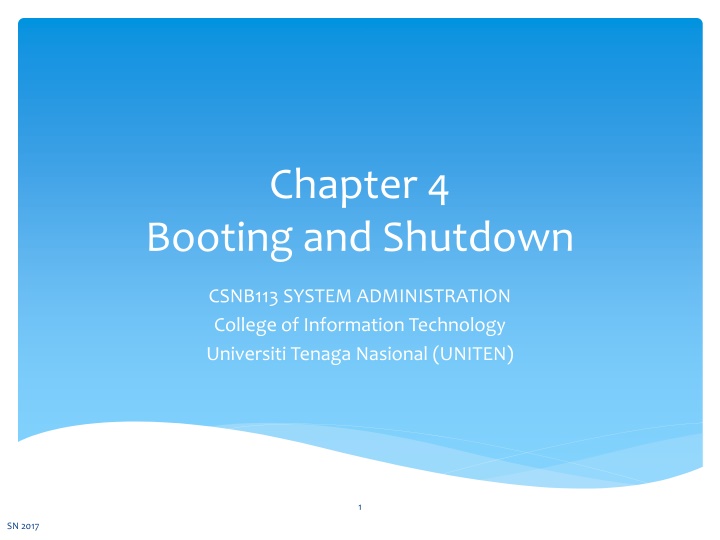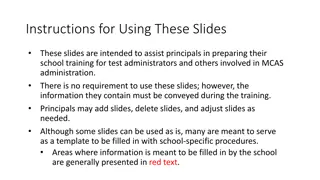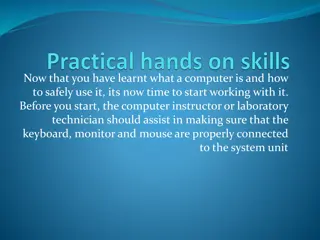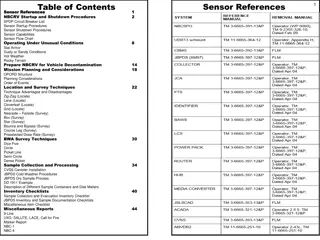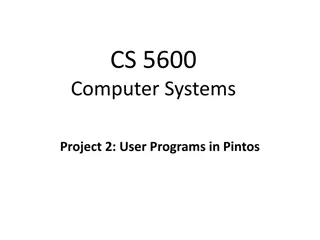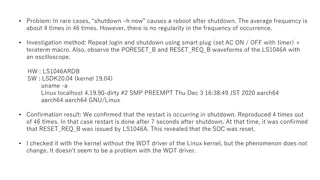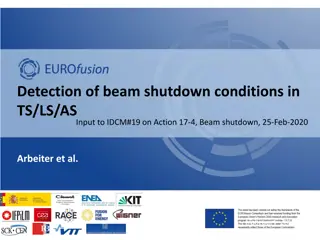Booting and Shutdown Procedures in System Administration
Automated shell scripts control the startup and shutdown procedures in system administration. Understand the sequence of steps followed during booting and shutdown operations, the concept of run levels, and the behavior of the init process in managing system state transitions. Learn about different run levels, their significance, and how the init command can be used to switch between them. Explore how run levels impact system behavior and user interactions in various modes.
Download Presentation

Please find below an Image/Link to download the presentation.
The content on the website is provided AS IS for your information and personal use only. It may not be sold, licensed, or shared on other websites without obtaining consent from the author.If you encounter any issues during the download, it is possible that the publisher has removed the file from their server.
You are allowed to download the files provided on this website for personal or commercial use, subject to the condition that they are used lawfully. All files are the property of their respective owners.
The content on the website is provided AS IS for your information and personal use only. It may not be sold, licensed, or shared on other websites without obtaining consent from the author.
E N D
Presentation Transcript
Chapter 4 Booting and Shutdown CSNB113 SYSTEM ADMINISTRATION College of Information Technology Universiti Tenaga Nasional (UNITEN) 1 SN 2017
Objectives Understand the concept of run levels and their role in startup and shutdown operations SN 2014 2
Introduction Startup and shutdown procedures are controlled by automated shell scripts System administrator needs to know that exact sequence of steps the system follows during the two events able to fix if things do go wrong 3 SN 2017
Booting Step 2 Step 4 Machine is powered on Follow a series of steps lead to the loading of kernel into memory System looks for all peripherals Kernel spawns init (PID1), followed by other processes Step 1 Step 3 PID1: Process-id 1 4 SN 2017
init init process: second process of the system Behavioral pattern of init for three vital reasons: Maintains the system at a specific run level (state) and decides which processes to run for each run level Parent of all system daemons (process) that keep running all the time Spawns a getty process at every terminal so that users can log in parent of all shell 5 SN 2017
Run level Indicated by a single digit (0 to 6), or an s or S Run level Description 0 System shutdown 1 System administration mode (local file system mounted) 2 Multiuser mode (NFS not available) 3 Full multiuser mode 5 The graphical environment mode in Linux 6 Shutdown and reboot mode s or S Single-user mode (file systems mounted) 6 SN 2017
init : Run level init state 1 or S Machine is powered on init state 0 or 6 init state 2, 3, or 5 System is shutdown Multiuser mode System administrator has the freedom to use the init command to move the system to any run level. Example:# init 1 7 SN 2017
Display run level who -r surizal@sn010101-scnb113 :~$ who r run level 2 2014-05-04 10:03 Example: Run level 2: ___________ mode 8 SN 2017
Shutdown shutdown command: shut the machine down Notifies users with wall about the system going down with a directive log out Activities during shutting down (sleeping for one minute): Sends signals to all running process normally terminate the process Log off and kill remaining processes Unmounts all secondary file systems unmount command Write all memory-resident data to disk sync command Notifies users to reboot or switch off 9 SN 2017
Shutdown - Ubuntu P option: overrides the default sleeping time of one minute r option: shutdown and restart/reboot # shutdown P 2 # shutdown P 0 # shutdown r 0 Powers down machine after 2 minutes Immediate shutdown Immediate shut down and reboot 10 SN 2017
References 1. Das, S. (2012). Your UNIX/LINUX The Ultimate Guide: Third Edition. McGraw-Hill 2. Hahn, H. (2008). Harley Hahn's Guide to Unix and Linux. California: McGraw-Hill Higher Education SN 2014 11
